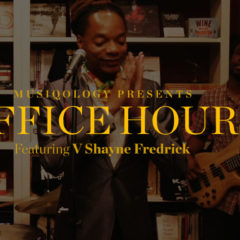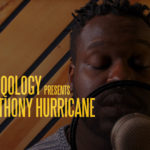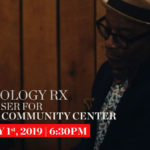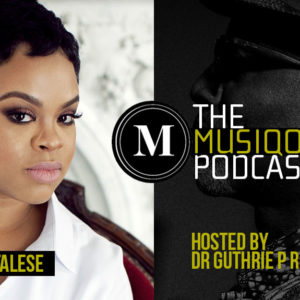It’s been more than a month since Marvel Studios’ Black Panther took theaters by storm, riding a wave of excitement and discourse built by #BlackTwitter and black Americans’ long-gestating readiness to see themselves represented on screen despite Hollywood’s ill-conceived fears about their global marketability. The film, directed by Ryan Coogler and starring Chadwick Boseman, Michael B. Jordan, Lupita Nyong’o, Danai Gurira and a host of other black actors, is a juggernaut, currently sitting as the seventh highest-grossing movie of all time as theaters continue to fill. #WakandaForever.
We had many thoughts after seeing the film, specifically revolving around its distillation and translation of many major Black Studies themes, among them colonialism, Afro-diasporic subjectivity, subaltern epistemologies, black nationalism versus integration, and the positives and negatives of metonymic “great men” narratives. The film engages with these long-thought-of academic topics in a way that feels organic rather than didactic (a model that was very attractive to us here at MusiQology).
Another added layer to the film’s gloss was its soundtrack, which combined scoring by Ludwig Göransson and curation by Kendrick Lamar, who, between his general lyrical themes and performance explorations (recall the “Compton is Africa” graphic from the 2016 GRAMMY Awards), seemed an able and appropriate musical manager.
Black Panther: The Album combines Lamar’s lyrical playbook with sparse trap-inspired soundscapes and a wandering thoughtfulness that drives many of the film’s battle sequences and important moments. Featuring a lengthy list of collaborators, including Vince Staples, SZA, Anderson .Paak, and many more, the record is a worthwhile contribution to Lamar’s oeuvre, and when paired with the film, it continues to add to Lamar’s jack-of-all-trades abilities.
We could come up with far more bars than 16 derived from the myriad articles discussing the film’s themes (Rochelle Valsaint captured many here), but we thought it appropriate to curate a selection of pieces discussing the soundtrack. There is a mix here—of praise, criticism, and context—that we hope furthers the conversation around this already canonical film.
“This is much bigger than just a music release. It’s much bigger than just a compilation album,” said David Bakula, senior vice president of analytics at Nielsen Entertainment. It’s not a surprise that the album is doing so well. “Black Panther” has been described as not just a movie but a cultural movement. The film has shattered the norms of black representation in Hollywood by featuring a mostly black cast and having a black superhero. It’s already one of the biggest blockbusters in Disney’s Marvel franchise.
The album was curated and produced by one of the most electrifying and socially significant performers in entertainment. And the album itself is a nontraditional soundtrack that could change the music industry.
Music supervisors, who have seen their cultural cache increase in recent years, would become gatekeepers to success. Executive production or curation of a film soundtrack as Kendrick Lamar has done would become the holy grail for artists. Additionally, what may emerge is something that resembles the music industry of India, where the country’s music industry is essentially a micro-industry within the Bollywood machine. Given its influence on the film industry and considerable presence in music, The Walt Disney Company would also thrive in such a world.
Video kills radio stars, but it may well be the film industry that leads the way in preserving the album as an artistic medium.
With Black Panther: The Album, the artist became an architect. Much like the film’s cast, which features actors from Zimbabwe, Kenya, Tobago, South Africa, the U.K. and U.S., the soundtrack is Pan-African in scope. In the same way that the film’s hero, King T’Challa, attempts to reconcile a fragmented Wakanda, Lamar took on a similar project, helming a collaborative effort that criss-crosses continents, hops genres and cross-pollinates perspectives.
Look no further than the rare amalgamation of diasporic tongues here — the Zulu of South African artists Babes Wodumo, Saudi, Sjava and Yugen Blakrok; the northern California slang of Sacramento standout Mozzy and Bay Area crew SOBxRBE; the trap-inflected Southern dialects of Future, 2 Chainz, Travis Scott and Swae Lee of Rae Sremmurd; the British soul of Jorja Smith; the pop vocals of Toronto’s The Weeknd. (Even U.K. star James Blake shows up, like the white CIA-spy-turned-Wakanda-ally Everett K. Ross in the film, to lend his support on two tracks. )
Kendrick Lamar’s Black Panther And The Art Of The Corporate Crossover – Tom Breihan, Stereogum
It’s a pan-genre album, but its strongest moments are also its most defiantly rap. Schoolboy Q barks, “Not even Kendrick can humble me,” calling back to the playful competitiveness that drove the early days of TDE. Wizened Sacramento cult favorite Mozzy brings beaten-down, hard-earned authority to “Seasons”: “I cried when lil bruh died / Got high and watched the sunrise.” And the young Vallejo crew SOB x RBE bring a hectic and urgent energy to “Paramedic!,” their showcase track, that the rest of the album sorely lacks. Still, this is a Kendrick Lamar project, so even the straight-up rap shit is philosophical. In his verses, Kendrick, probably the best rapper in the world, ruminates on the idea of kingship, on the weight of responsibility when you find yourself in a leadership position. That’s nothing new for Kendrick, who’s been meditating on his place in the rap cosmos ever since he showed up. But it also makes sense for movie tie-in reasons. Black Panther, after all, is a movie about the superhero king of a technologically advanced African nation. So even when he’s getting expansive, Kendrick is doing his movie-pitchman duty.
‘Black Panther: The Album’ promotes the film but stands on its own – Julian Kimble, Washington Post
“Black Panther: The Album,” as advertised, delivers music from and inspired by the film. In addition to assembling a (somewhat) Pan-African ensemble cast of artists, Lamar keeps the album aligned with “Black Panther’s” concept: He often speaks from the opposing perspectives of its namesake, the superpowered monarch T’Challa of the fictional East African kingdom Wakanda, and his antagonist, vengeful revolutionary merc Erik Killmonger. These viewpoints guide the album, with several motifs and developments seeded throughout its 49-minute duration — teasers delivered a week before the theatrical release via a project conceived to help generate excitement for it.
The Best Part about Black Panther Might Be its Music – Brian De Los Santos, Mashable
It’s used in the film sparingly, but if you go back and listen to it, it’s almost eerie how well it mirrors the film’s narrative. It’s impressive too, when you consider the fact that Lamar only saw about half the film before hopping in a booth to record the album. (A comical aside: Coogler notes, specifically, that Lamar’s work was fueled by “hella snacks.”)
The Music Of ‘Black Panther’ Is The Movie’s Secret Weapon – Dan Jackson, Thrillist
Like the movie itself, Black Panther The Album is at its most compelling when it embraces the charismatic radicalism of Killmonger, the scene-stealing villain played Michael B. Jordan, daring to explore political ideas, emotional tones, and stylistic registers typically kept outside the Marvel universe. “King’s Dead,” a careening posse cut featuring Lamar, his Black Hippy co-hort Jay Rock, and Atlanta innovator Future, could give a Disney executive a heart attack. But here it is on an album that Spotify invites you to listen to when you open up the app. You can hear Future say “Slob on me knob” on a record that’s tied to a movie that will probably gross a billion dollars.
For all the ways in which it looks forward, though, “Black Panther” also proudly adheres to an established tradition of black movie music that stretches back decades — through “Boyz n the Hood” and “Waiting to Exhale” in the 1990s to “Purple Rain” and “Do the Right Thing” in the 1980s to “Super Fly” and “Shaft” in the 1970s. The idea, in contrast with many of today’s more obligatory soundtracks, is not merely to assemble a collection of songs to wallpaper a blockbuster or to extend its pop-culture footprint to Top 40 radio (or to Spotify). Rather, what connects these movies and their accompanying albums to each other is the shared determination to utilize music as a storytelling device — including tunes delivered from characters’ points of view — and to reflect the sprawl of an ambitious narrative with a soundtrack that coheres even as it showcases a diversity of styles.
The Song of Killmonger – Spencer Kornhaber, The Atlantic
Lamar’s broader catalogue contains few such happy endings, but at the core he preaches mindfulness, solidarity, and spiritual righteousness as the path to progress. The Black Panther musical project, on which he features in every song but credits himself as a primary performer on only five tracks, may even be him practicing the film’s message about spreading one’s wealth around the diaspora. Killmonger-like anger and T’Challa-like prudence thread through all his songs, but song itself, in Lamar’s view, may be the superpower that eases injustice. In that To Pimp a Butterfly outro during which Tupac predicts a new, bloody Nat Turner–like rebellion, Lamar replies, “In my opinion, only hope that we kinda have left is music and vibrations”—which is, perhaps, the closest thing he has to Vibranium.
The ‘Black Panther’ Soundtrack Could Have Been So Much More, GOTDAMMIT – Lawrence Burney, Vice
For a film that is set in a fictional East African nation, Black Panther’s soundtrack does a poor job of depicting what the African diaspora has to offer. There are 11 black American artists out of 23 total on the album, mostly comprised of West Coast natives. Only four South Africans are featured: Saudi, Sjava, Babes Wodumo, and Yugen Blakrok. The Weeknd is an Ethiopian who grew up in Toronto, and Jorja Smith is a black Brit. Compare this to Drake’s 2017 More Life, which had four black British artists (Giggs, Skepta, Jorja Smith, Sampha), South Africa’s Black Coffee, and Partynextdoor who was born to Jamaican and Trinidadian parents in the Toronto area. The difference is that Drake’s project is not tied to a phenomenon that aims to affirm borderless black identity. Under normal album-making circumstances, this project would be helping set the tone for providing a more globalized rap sound, but what Black Panther is supposed to symbolize warrants even more variety.
Kendrick Lamar Does It Again on ‘Black Panther: The Album’ – Rob Harvilla, The Ringer
Everyone on Black Panther: The Album is carrying an overwhelming weight: their cities, their boundless potential, or, in the case of the biggest stars, their spectacular reputations, terrible burdens that double as ungodly-powerful weapons. It’s great fun trying to map this record to the allegedly paradigm-shattering movie that inspired it, pinpointing the action scenes, the mournful scenes, the GIFs and memes yet to be born. But it’s likewise hard not to project all these boasts and gripes and declarations onto Lamar himself, a critical darling secure in his dominance but eager to prove that he’s got plenty left to prove. He is hell-bent on clarifying who he is and who he is not, who he represents and who he does not. The boldest-face names on this record don’t necessarily sound the boldest. But in this and so many other ways, Kendrick is the riveting exception.
Album Review – Sheldon Pearce, Pitchfork
Black Panther The Album is at its best when channeling Wakanda’s innovative spirit and self-sustaining ethos, characteristics we have already come to associate with Kendrick. He is one of the most ambitious MCs there is, a rapper of nearly unlimited potential who operates like a well-oiled machine. Kendrick has five official features on the album, but he appears somewhere on every track. Being a soundtrack for a Disney-backed superhero movie, it was never destined to possess the boldness and urgency of his solo work, but it often feelsmonumental. When it isn’t radical in its sonics (like incorporating the robotic whines of James Blake into a calypso-ish tune on “Bloody Waters”), it’s radical in its casting, enlisting diverse guests and forming unlikely pairings with mostly wondrous results.
Black Panther: The Album is more than just a tasteful tie-in album that gives the TDE kids a few more songs to perform on their upcoming tour. It’s a musical summit between different corners of the black diaspora. K. Dot and TDE feature alongside fellow West Coast rappers Vince Staples, Mozzy, and SOB X RBE. 2 Chainz, Travis Scott, and Swae Lee rep the American South. From South Africa, there’s Babes Wodumo, Yugen Blakrok, Sjava, and Saudi. The Weeknd reps Toronto and Ethiopia. Singer Jorja Smith hails from London. The visionary stretches of Black Panther: The Album succeed at playing everything to everyone. “Opps” sees Kendrick, Staples, and Blakrok jousting over a hellish production not far removed from the stark hip-house of Vince’s Big Fish album. Lamar goes nuclear over tribal drums on the opener “Black Panther,” channeling Wakandan warrior-king T’Challa’s tortured tug-of-war between ambition and ancestral obligation as he ponders his own hip-hop regency. “Redemption” pairs South African gqom star Babes with “LOVE.” singer Zacari. It’s hard not to pine for more cross-cultural moments like these, but realistically speaking, Black Panther: The Album is ⅔ full of airtight American rap and R&B performances because there’s units to push here.
There’s also an obvious dissonance with the themes of the film and many of the soundtrack’s lyrics. On “King’s Dead,” Future raps about smashing baby mamas in the penthouse and fellatio over a Mike Will Made It beat. Those lyrics don’t jibe with a film that portrays the physical and mental power of Black women unlike any film before it. “Paramedic!” has a dope beat, but Bay Area group SOB x RBE group delivers basic scumbag gangster bars over it, with Lamar repeating “I wish a nigga would, I wish a bitch would” over the hook.
With Afrofuturism, tomorrowland dominates the imagination, and the past can even be erased, deleted, or cleared: “clear all this space… clear today… clear your mind… clear behind….” For me, Afrofuturism in its musical form—what Kodwo Eshun calls “sonic fiction” in his groundbreaking book More Brilliant than the Sun, which Verso is reprinting this year—really begins with Cybotron’s “Clear.” This track was not just a radical appropriation and re-versioning of Kraftwerk, but a radical refusal to claim any of the past. This goes completely against the kind of ancestor worship that forms the basis of almost all black African religious beliefs. Indeed, this ancestor worship is even at the heart of the Black Panther movie. The spirits of our dead and gone speak to with us, still have something to say, and can see beyond the confines of the present. (There are traces of this ancestor worship in the Chimurenga-like rebellion in Star Wars.)
Black Panther soundtrack review – Kendrick Lamar’s Superfly moment – Alexis Petridis, The Guardian
Lamar’s opening title track offers up music as knotty and challenging as anything on To Pimp a Butterfly: off-key piano and samples clanging against each other; abstract, jazzy horns hovering in the distance, a startling moment where his rapping – in the character of the film’s hero T’Challa – unexpectedly speeds up, racing dramatically away from the beat.
At its best, this soundtrack deals in similarly heady ideas. On I Am, a beautiful tune delivered by Jorja Smith is marooned over a groggy beat, twisted, sickly samples and a guitar riff so agonisingly slow it might have escaped from a stoner metal album. King’s Dead, meanwhile is the latest in a series of Lamar tracks that short-circuit the listener with sudden musical shifts. It’s effectively two completely different tracks spliced together with a brief interlude from a third that features James Blake and a wash of Beach Boys-y vocal harmonies. It boasts a particularly spectacular lyrical firework display in which Lamar’s exploration of the character of Black Panther’s nemesis Killmonger dovetails with the kind of bleak nihilism found in To Pimp a Butterfly’s most despairing moments. Blake also features on another highlight, the sparse Bloody Waters, the desolate chill of his voice chafing against Anderson.Paak’s impassioned delivery.

 Share On Facebook
Share On Facebook Tweet It
Tweet It








